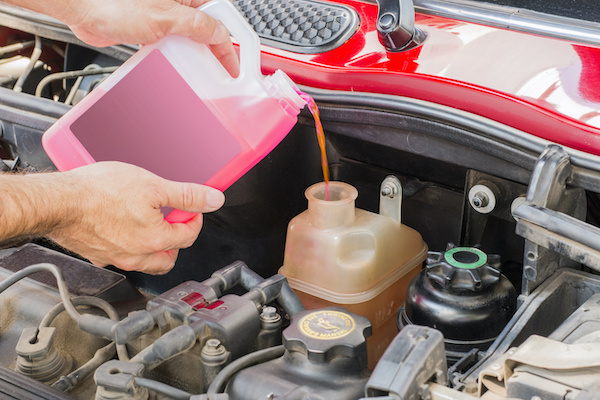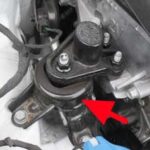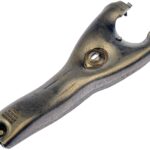
How to Check Transmission Fluid Level in a Toyota Camry

When it comes to car maintenance, checking the transmission fluid level is often overlooked—yet, it's one of the most critical components in ensuring the smooth operation of your Toyota Camry. Transmission fluid serves as the lifeblood of your vehicle’s transmission, allowing gears to shift smoothly and preventing unnecessary wear. Let's dive into the "how-to" of checking the transmission fluid in your Toyota Camry, and why it matters.
- Why Checking Your Transmission Fluid Is Important
- Understanding Toyota Camry’s Transmission Fluid
- Step-by-Step Guide: How to Check Transmission Fluid in a Toyota Camry
- Tips for Maintaining Your Toyota Camry’s Transmission Fluid
- Closing Thoughts: Keep Your Transmission in Tip-Top Shape
- FAQs
- 1. Can I drive with low transmission fluid in my Toyota Camry?
- 2. How often should I check my transmission fluid?
- 3. What happens if I use the wrong transmission fluid in my Camry?
- 4. Can I check the transmission fluid if my Camry doesn’t have a dipstick?
- 5. What should I do if my transmission fluid smells burnt?
Why Checking Your Transmission Fluid Is Important
Imagine your transmission as the brain of your car’s drivetrain. If it’s not properly lubricated with the right amount of fluid, it could lead to overheating, slipping gears, and even complete transmission failure. Regularly checking your transmission fluid ensures that everything stays running smoothly and efficiently.
But why does it matter for your Toyota Camry in particular? Whether you own a 2009 Camry or a 2025 model, checking your fluid level helps maintain the vehicle's performance over time. After all, keeping that engine humming along isn’t just about oil changes—it’s about all the little things, like transmission fluid, that keep the ride smooth.
Understanding Toyota Camry’s Transmission Fluid
What Does Transmission Fluid Do?
Before we dive into the mechanics of checking the fluid, let’s clarify what transmission fluid actually does:
- Lubricates: It reduces friction within the transmission’s moving parts.
- Cools: It helps regulate the temperature of the transmission, preventing overheating.
- Cleans: It traps dirt and metal particles, preventing them from damaging the internal components of the transmission.
- Hydraulic Pressure: The fluid creates the necessary hydraulic pressure to shift gears smoothly.
Without enough fluid, or with dirty fluid, your transmission can’t perform at its best.
Types of Transmission Fluid for Toyota Camry
Toyota Camrys typically use one of two types of transmission fluids, depending on the model and year:
- Dexron®-VI: A common fluid type used in many vehicles, including older Camry models.
- Toyota Genuine ATF WS (World Standard): This is a more recent fluid designed for newer Toyota vehicles.
Always refer to your owner’s manual to determine the exact fluid type needed for your Camry.
You may be interested in reading 2005 Toyota Camry Engine Mount Replacement: A Comprehensive Guide
2005 Toyota Camry Engine Mount Replacement: A Comprehensive GuideStep-by-Step Guide: How to Check Transmission Fluid in a Toyota Camry
Now that we understand why it's so important, let's move on to the "how-to" part. Checking your transmission fluid level doesn’t need to be intimidating—it's actually pretty straightforward.
Step 1: Prepare Your Camry
Before you get started, you'll need to prepare your vehicle:
- Park the Car on a Level Surface: This ensures that the fluid settles properly, giving you an accurate reading.
- Turn on the Engine: Transmission fluid should be checked when the engine is running, so make sure it’s warmed up and running at idle.
- Ensure Safety: Always put the car in “Park” mode, engage the parking brake, and keep your foot on the brake.
Step 2: Locate the Transmission Dipstick
In most Toyota Camrys, the transmission dipstick is located near the back of the engine bay. It's usually marked with a colored handle (often red or yellow). If you’re unsure, consult your owner’s manual, as it may vary slightly by model year.
For some newer Camry models, the transmission dipstick may not be available, as they come with a sealed transmission system. In this case, you’ll need to visit a mechanic or use the electronic check feature if your car is equipped with it.
Step 3: Check the Fluid Level
- Pull the Dipstick Out: Carefully pull the transmission dipstick out of its tube.
- Wipe Clean: Use a clean cloth or paper towel to wipe any fluid off the dipstick.
- Reinsert the Dipstick: Place the dipstick back into the tube and make sure it’s seated properly.
- Check the Fluid: Pull the dipstick back out and inspect the fluid level. The fluid should be between the “Full” and “Low” marks. If it’s below the “Low” mark, you need to add more fluid.
Step 4: Inspect the Fluid’s Condition
Now that you’ve checked the fluid level, you also need to inspect the fluid’s condition:
- Color: Transmission fluid should be a translucent red or pink. If it’s brown or black, this indicates it’s old and possibly contaminated.
- Smell: The fluid should have a slightly sweet odor. If it smells burnt, it could be a sign of overheating.
- Texture: Rub a small amount of the fluid between your fingers. It should be smooth. Gritty or chunky texture suggests contamination.
If you notice any of these signs, it’s time for a fluid change.
Step 5: Add Transmission Fluid (If Needed)
If your fluid level is low, you’ll need to top it off:
You may be interested in reading 2005 Toyota Camry Engine Mount Replacement: A Comprehensive Guide
2005 Toyota Camry Engine Mount Replacement: A Comprehensive Guide Ford Focus Clutch Fork Replacement: The Complete DIY and Expert Guide
Ford Focus Clutch Fork Replacement: The Complete DIY and Expert Guide- Find the Right Fluid: Make sure you use the correct type of transmission fluid for your Camry, as mentioned earlier.
- Add Fluid: Use a funnel to add the necessary fluid, taking care not to overfill.
- Recheck: After adding, repeat the checking process to ensure the fluid level is just right.
Step 6: Clean and Close
After you've finished checking and/or adding fluid, make sure to clean the dipstick again and securely close the dipstick tube. Also, dispose of any rags or used paper towels properly.
Tips for Maintaining Your Toyota Camry’s Transmission Fluid
- Change Fluid Regularly: Check your owner’s manual for the recommended interval to change your transmission fluid, usually every 30,000 to 60,000 miles.
- Don’t Overfill: Too much fluid can also cause problems, like frothing and erratic shifting.
- Watch for Leaks: Transmission fluid leaks are common, especially in older vehicles. Keep an eye on the ground under your car and check for signs of red fluid.
- Check Fluid Temperature: Some Camrys come with a transmission temperature gauge. If the fluid is too hot, it might indicate a problem.
Closing Thoughts: Keep Your Transmission in Tip-Top Shape
Taking just a few minutes every few months to check your transmission fluid can save you a lot of trouble down the road. Proper fluid levels and quality can extend the lifespan of your Toyota Camry’s transmission and prevent costly repairs.
Remember, while checking the fluid is simple, staying on top of it is the key to making sure your Camry continues to shift smoothly and reliably.
FAQs
1. Can I drive with low transmission fluid in my Toyota Camry?
Yes, but driving with low fluid for extended periods can cause serious damage to your transmission. It’s best to address the issue immediately.
2. How often should I check my transmission fluid?
It’s recommended to check your fluid every 3,000 to 5,000 miles, but always refer to your owner’s manual for specific guidance.
3. What happens if I use the wrong transmission fluid in my Camry?
Using the wrong fluid can cause shifting problems, overheating, and even permanent damage to your transmission. Always use the recommended fluid type.
4. Can I check the transmission fluid if my Camry doesn’t have a dipstick?
Some newer Camrys don’t have a dipstick for the transmission fluid. In that case, you’ll need to take your car to a mechanic for an inspection.
You may be interested in reading 2005 Toyota Camry Engine Mount Replacement: A Comprehensive Guide
2005 Toyota Camry Engine Mount Replacement: A Comprehensive Guide Ford Focus Clutch Fork Replacement: The Complete DIY and Expert Guide
Ford Focus Clutch Fork Replacement: The Complete DIY and Expert Guide Nissan Xterra Headlight Bulb Replacement: Complete Guide to Better Night Visibility
Nissan Xterra Headlight Bulb Replacement: Complete Guide to Better Night Visibility5. What should I do if my transmission fluid smells burnt?
Burnt-smelling fluid is a sign of overheating or internal damage. It’s essential to get your transmission inspected as soon as possible.
If you want to know other articles similar to How to Check Transmission Fluid Level in a Toyota Camry you can visit the category Maintenance.
Deja una respuesta






More content of your interest